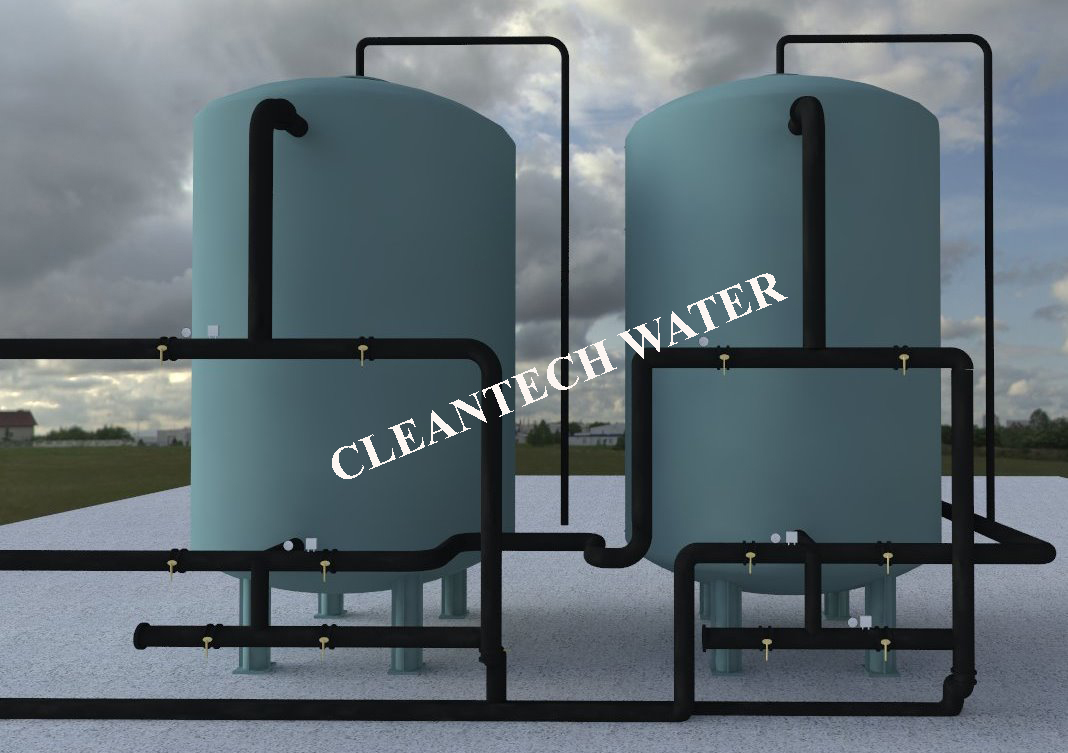 Water treatment plants are essential because the several types of impurities present in water are extremely harmful to the health of human and animals. Also, they cause damage to the environment as well. Organic matter, turbidity, and several other types of impurities can be removed by dual media filters. They may or may not remove the dissolved solids completely, but there is a sure reduction in the concentration of solids because water softens after filtration.
Water treatment plants are essential because the several types of impurities present in water are extremely harmful to the health of human and animals. Also, they cause damage to the environment as well. Organic matter, turbidity, and several other types of impurities can be removed by dual media filters. They may or may not remove the dissolved solids completely, but there is a sure reduction in the concentration of solids because water softens after filtration.
Media filtration is a simple mechanical process which uses physical and chemical absorption phenomenon. Straining, sedimentation, interception, and diffusion are other important stages. Inertial compaction completes the filtration, and you get clean, soft, sparkling water. Quartz sand, anthracite, coal, silica sand, and garnet are the popular substances used as dual filter media. These filters are equally useful in domestic and industrial applications.
Surface water or wastewater can be filtered using media-based filtration systems. Cleantech offers a wide array of choices designed to meet the diversified requirements of clients. We offer manual, semi-automatic, automatic, and remotely operated models with singular or multiport valves.
Types of Dual Media Filters
There are several types of dual media filters available in the market. The popular choices are:
✦ Anthracite Filters
It is used in dual-media filtration with sand because its specific gravity is lighter than sand. Due to high carbon content, it resists the majority of chemicals. It is a high physical strength material which is used in a wide variety of applications. It has high removal capacity of SS and turbidity. It is used as the carrier for bio film treatment. Micro-flocks grow easily in the medium.
✦ Calcite Filters
Other than filtration, Calcite Filters achieve a high degree of neutralization. They raise the pH value of water so that it achieves non-corrosive equilibrium. Increased water quality avoids leaching of copper pipes, metal pipes, and plumbing components. Since Calcite is naturally found component, it is a cost-effective solution. The cartridge designs fit a majority of filtration plants.
✦ Activated Charcoal Filters
They are ideal for removing residual disinfectants as well as organic constituents in the water so that the health hazards can be minimized. The filters also greatly improve the taste of water. When treated water is supplied to other filtration systems such as RO, it saves from organic fouling or oxidation. Higher molecular weight of particles means the higher efficiency of carbon filters. Similarly, lower pH value means the removal is efficient. Activated carbon effectively removes high contaminant concentration. It is available in large, medium and fine mesh sizes.
Typical Construction of Media Filtration Plant
Multimedia filtration uses three or more media layers whereas sand filters use a single layer of a particular grade. In the single media filters, the smallest (or finest) media particles are on the upper layers of media bed and bigger and heavier particles are on the lower layers. Since all filterable particles are within 2 to 3 inches on the upper layers, this filter doesn’t use the media depth optimally.
As a result, the filter run times shortens, and there are filter blinds in the process. Three types of media layers are used in these filters; Garnet, anthracite, and sand. Since there is a big disparity in their densities, they make the filtration system effective.
As far as filtration media per unit volume is concerned, Anthracite has the largest PUV value followed by sand and garnet. Due to the differential PUV value, large contaminations get trapped in the first layer, and small contaminations particles shift down to the lower layers. Therefore, efficient turbidity removals and extended run times between two backwash cycles can be achieved.
Reports say that the simple sand filter can remove particles up to 2 to 50 microns size, multimedia filters can remove up to 10 to 15 microns size. It means the efficiency is quite high.
When filters operate at high-pressure differential, particles deep dive into the media bed and even the strongest backwash is also unable to remove them completely. Thus, you get a lot of dirt accumulated in the deeper layers of media bed and the filter running time gets shortened gradually.
In such situation, filter backwash process has to use air scour, so that packed dirt gets loosened. A drain down period is required in the backwash cycle to let the water come out of the filter vessel before you use air scour.
What is Better? Multimedia Filers or Sand Filters?
Well, both have advantages and disadvantages. However, multimedia filters are capable of trapping a fairly large number of particles as compared to the conventional sand media filters. The reason is quite obvious; here several filtering layers have different levels of porosity.
Since the entire depth of the dual media filter bed is completely utilized in multimedia water filters, they last long than the conventional sand-based filters. High-quality output, fast flow rate, and cost-effective working are the distinct benefits of these filters.

